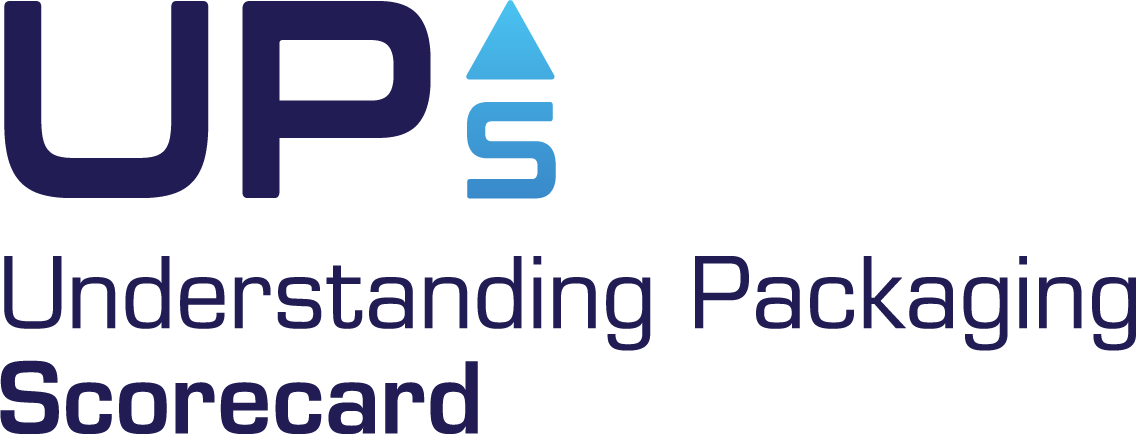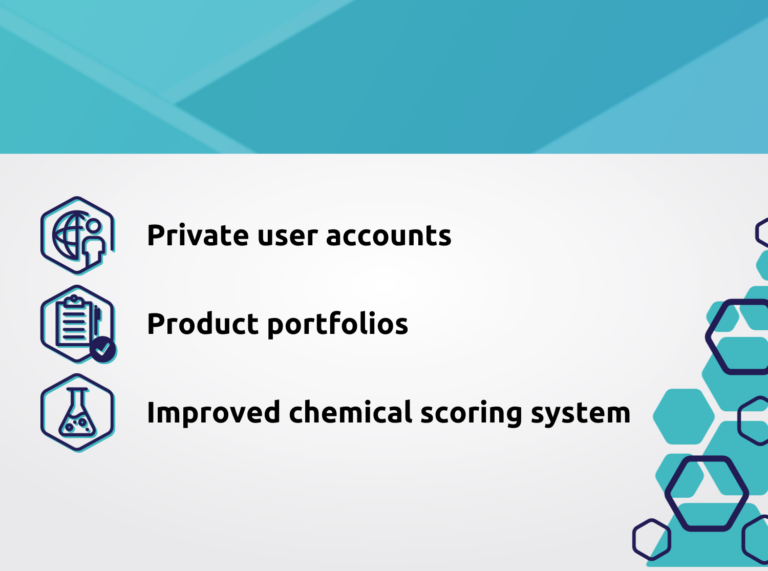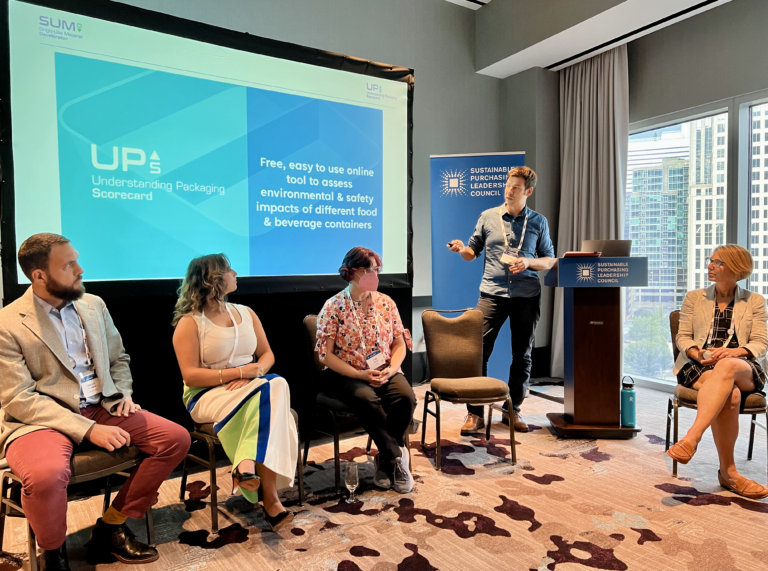Sustainability has many different facets and is nowadays also an important topic for all types of packaging, including food packaging. But a key challenge is to get a common understanding across stakeholders of what packaging sustainability is and how it should be assessed. In April 2022, the World Business Council for Sustainable Development (WBCSD) released a new packaging sustainability framework called SPHERE to help tackle this challenge and allow companies to prioritize actions and monitor their performance towards increased packaging sustainability. Within the new framework, packaging sustainability is defined as “maximum circularity and minimum environmental footprint, while avoiding the presence of harmful substances.” The UP Scorecard played a key role in helping shape an important part within this wide-reaching new framework.
Introducing the SPHERE framework and its CoC metric
The SPHERE framework assesses the sustainability of all types of packaging (including non-food packaging) with six guiding principles including the topics of packaging efficiency, climate change, circularity, end of life, harmful substances and biodiversity loss. For each of the six principles, there are one or more metrics evaluated using established methodologies or tools to make them measurable and actionable. For the framework’s fifth principle “avoid harmful substances,” the Chemicals of Concern (CoC) metric from the UP Scorecard is being applied.
The CoC metric is one of six novel metrics included within the UP Scorecard, and it helps companies compare and choose the safest packaging options. Take a look at this earlier article for a more detailed introduction and guidance to how the CoC metric was developed and is applied within the UP Scorecard.
Insights into the challenges and opportunities of SPHERE and the use of the CoC metric
To better understand how the WBCSD’s SPHERE framework was able to make use of the UP Scorecard’s CoC metric, we spoke with Sarah Perreard, stakeholder engagement lead at EA – Environmental Action and SPHERE framework development partner. Through answering the questions below, she helps to explain some of the initial experiences the development team had with the SPHERE framework and the challenges and opportunities they faced when incorporating the UP Scorecard’s CoC metric.
Sarah Perreard, sustainability is a very broad field that encompasses many different aspects. How did you come up with the six principles that are now included in the SPHERE framework to manage this complexity?
One trend in packaging over the last 20 years has been the use of life cycle analysis (LCA) as a tool to assess the environmental footprint of packaging products. This has led to some formats being largely replaced, e.g. glass by plastic. Especially in terms of carbon footprint, plastic is always the winner because it’s so light and you need very little of it to perform a certain function.
But then, about 10 years ago, the problem that plastic creates at the end of life became more and more visible. A few years ago, the question was raised of how we could account for such issues as waste mismanagement and leakage. Other metrics were developed to better assess the end of life, but all of them were considered separately in silos from the already existing metrics. So, when brand owners developed their packaging, the metrics were often contradicting. In addition, other types of metrics were emerging, such as the circularity one, which made the assessment even more complicated.
To better integrate the end of life and the circularity into an overall assessment, the WBCSD introduced CTI (Circular Transition Indicators) a few years ago, and the Ellen MacArthur Foundation launched MCI (Material Circularity Indicator). Both approaches were still very aggregated. They provide a score, but due to the high complexity, it is difficult for brand owners to understand how to improve it.
This was the starting point of the SPHERE framework, that looks more broadly into the question of what we want packaging to achieve. Packaging plays a very important role in protecting the product, such as keeping food fresh, or more generally, ensuring that the product reaches its destination in one piece. We wanted to make sure that this “Why” of packaging is represented. Therefore, “optimize packaging efficiency” is one of the six principles in the SPHERE framework. Based on the experience mentioned before, three other principles were applied as well: “minimize climate change”, “maximize circularity” and “optimize end of life”. When we developed the framework, we also asked ourselves about the potential impact of the use and possible mismanagement of packaging on biodiversity. Therefore, “minimize biodiversity loss” is also a principle in the framework.
To what extent was the issue of harmful substances in packaging already a current concern for those involved when the work on the SPHERE framework started?
In recent years, there have been more and more studies on the potential risks of plastics at the end of their life, when they decompose in the environment, for example, but also on the potential interactions between food and packaging. This is also seen as part of sustainability in itself, because you want the people who consume the food or work with the packaging in recycling plants, etc., to be safe. So, it was a logical step to integrate this topic as an additional “avoid harmful substances” principle into the SPHERE framework. While working on the SPHERE framework, we realized that there were many more principles and metrics that could be added or that might emerge in the future. Therefore, we developed the framework to be future-proof so it can continue to be expanded and improved to address the needs and concerns related to packaging.
How did you learn about the UP Scorecard and what interested you about the approach it takes?
When we started thinking about the “Avoid harmful substances” principle, we discovered the work SUM’D was doing with the UP Scorecard and the chemicals of concern. As experts in LCA and plastic leakage, we were not that well educated in this topic of harmful substances. It was a great opportunity to be able to integrate all the work that was being done with the UP Scorecard project.
What are the biggest challenges so far for the implementation and use of the UP Scorecard’s CoC score (and the topic of chemicals in general) in the SPHERE framework?
We did a stress test of the SPHERE framework in five different pilot projects looking at its applicability and potential pain points. We definitely had some difficulties in getting the necessary information about the chemicals of concern. This is likely due to the fact that there is now a very well-developed process for all regulated substances, like the process under the European Union’s REACH regulation, but not for the unregulated substances. The chemicals of concern list within the UP Scorecard is much longer and more complete than the lists used within the current regulations. As a result, it takes a lot of work for manufacturers to track this information that goes beyond the regulations. And in many cases, this information is not even available.
We tried, and the companies we worked with for the pilots were very motivated to try and ask the necessary questions. However, they concluded that they don’t have a process in place to understand and collect this information, or they don’t know it themselves. So, they would have to ask their suppliers, and they in turn would have to ask their suppliers, and so on. At this point, there will probably be only a few companies that are very committed to setting up such a process and pushing up the value chain with such requests. But as such requests become more common, we think that this will definitely ease the process. That needs to be developed. Probably it feels a little bit like when REACH started. It always takes a little bit of time for the industry to adapt to these new types of requests.
What opportunities arise from incorporating the CoC score into the SPHERE framework?
The incorporation of the CoC score is definitely an opportunity. In fact, we’ve talked to some of the regulatory teams in the companies. They feel that this is a really good thing, and they are actually curious to know about it. So having the CoC score within the SPHERE framework potentially gives more visibility to the topic and the methodology, which sparks interest.
The way the SPHERE framework was developed, i.e. no overall resulting single score, allows for users to not yet consider some metrics. Such metrics are then greyed out, but still visible. This clearly indicates that in such cases more information is still needed, which should drive efforts to gather this missing information.
How is the SPHERE framework in general and the CoC Score in particular being received so far? Any examples of it already used in practice?
Obviously, the framework was introduced only recently. Currently, there are five pilots using the SPHERE framework. Everyone who has worked with the framework already wants to introduce it to their other clients. There is a lot of interest from clients to use it. For some of them, the chemicals of concern are a bit less relevant. The relevance really depends on the type of material used for the packaging and the product being packaged. This also has to do with the fact that the UP Scorecard’s CoC score was developed specifically for food packaging and that the SPHERE framework addresses packaging in general.
Do you have an example of where the CoC score or the principle of “avoid harmful substances” fostered an important discussion or even decision on how to possibly tackle an instance of harmful chemicals in packaging?
When it comes to the safety of packaging, the answer is often that a packaging article complies with current regulations and that the regulations are strictly applied. What we found brilliant and really interesting about the UP Scorecard’s work is the research in looking further into this topic of packaging safety. Obviously, there is always a delay or lag of time between the scientific studies on the effects of certain chemicals of concern and the translation of the results into regulations. It is during this lag of time that things can go wrong, i.e., packaging comes to market that complies with current regulations, but is still unsafe. At the company level, resources are often lacking to conduct such thorough reviews beyond regulations. That is why initiatives like the UP Scorecard are very important to empower users to be better informed and make better decisions upfront. For companies, it is key to bring products to the market that are safe. In this regard, the UP Scorecard’s approach is very complete yet simple to understand, which makes it very compelling. It has been very well received, and there is a good understanding that we need to do better and will do so.
What changes/further developments to the CoC Score would be desirable to further strengthen its linkage with the other (environment-related) metrics in the SPHERE framework? Are there any additional changes to (or guidance from) the UP Scorecard that would potentially help?
In terms of the CoC methodology, there is likely not much else that could be done to make it more easily applicable. One thing that could obviously be improved is the process of how to get the information needed within the value chain. This is about what kind of data would need to be disclosed to make it easier for brand owners and manufacturers to actually find the type information they need. But this is more of a system change than an adjustment in methodology.
What lessons do you think have been learned so far during the development of SPHERE?
A learning that is not particularly surprising but rather a confirmation, is that you really have to test such a framework. It is during testing that you realize what really works and where you have the difficulties. It was also a good test to have a very diverse advisory committee during the development of the framework. That was very helpful and because of the way the WBCSD is structured, it was great to have all sides represented. It was a good stress test for the current framework and generally showed that there is still so much more to develop. For example, there is not yet a methodology that could be integrated into the framework to assess the environmental impacts of leakage, such as from plastic packaging.
What are you most excited about when looking ahead regarding this topic? and packaging?
A general key learning was that the field of packaging sustainability is evolving so rapidly that it is key to future-proof the framework. So instead of saying what in detail should be included in the framework that could be outdated just two months later, we focused on the criteria that should be integrated or that should be used when future methodologies or metrics become available. In that sense, we tried to keep the framework very open. This keeps the framework alive and people interested in contributing to it. This might be very much how we can move the needle in the right direction. The framework provides the opportunity for all the work that is being done in the field to somehow find its space. We already have a lot of ideas about what could be added to it in the future.
Sarah Perreard is the stakeholder engagement lead at EA – Environmental Action. She is building and leading multi-stakeholder projects and advocating for cross-sector collaboration, e.g., as SPHERE framework development partner. A circular economy and sustainability professional and a marketer at heart, she combines various experiences inside and outside the corporate world.








